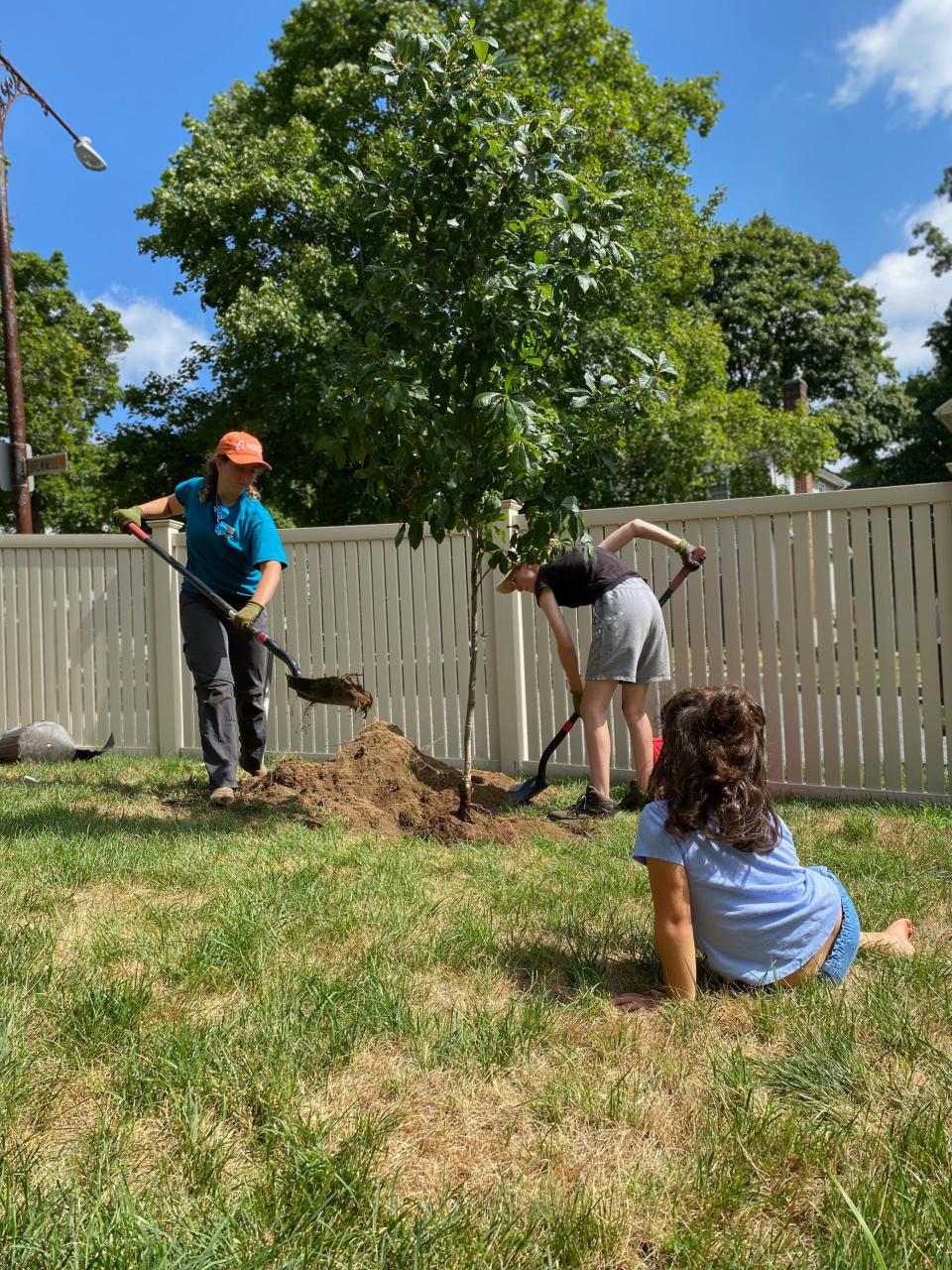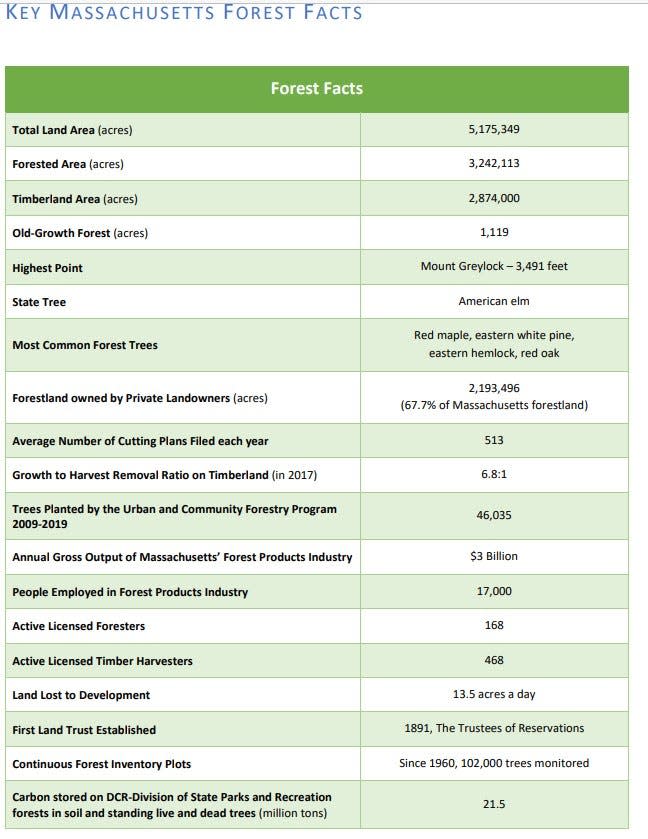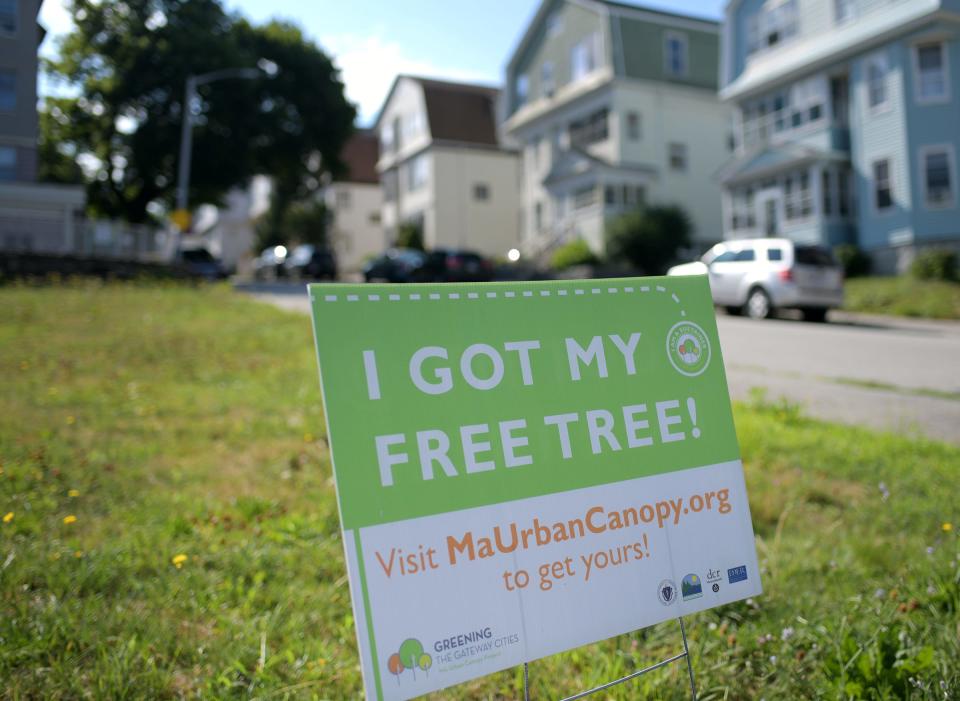Experts: More trees needed to mitigate effects of climate change
WORCESTER — In his 1913 poem "Trees," American poet Joyce Kilmer eulogized the beauty of a tree, created by God and nature, never to be equaled by humans.
What Kilmer's poem failed to mention in its 12 lines is that the worth of a tree far exceeds its beauty — offering habitat, sustenance, carbon sequestration and even improving humanity’s mental health and extending life expectancies of people who live in or close to nature.
A group of experts presenting information at the annual Urban Tree Symposium presented by the New England Botanic Garden at Tower Hill in Boylston Friday offered expert information and historic perspectives on urban forestry measures. The symposium was co-sponsored by Speak for the Trees and Ecological Landscape Alliance.
More:New study: Plant more trees in Worcester to combat rising temperature
In their presentations, the experts indicated that as climate change becomes an undeniable reality, the value of trees and their ability to mitigate effects of global warming are being factored into policy decisions made by local, state and federal agencies as ways to combat the crisis.

Planting trees is one of the avenues to mitigate climate change.
Programs to increase tree canopy in urban areas
“Cities in the United States and around the world have engaged in ambitious programs to plant trees and increase tree cover,” said Lara Roman, a research ecologist with the USDA Forest Service who studied the changes in urban tree canopies in her native Philadelphia, and in Holyoke and Chelsea in Massachusetts.
More:Empty tree wells: A rooted and frustrating problem in Worcester
In her research, Roman found that many factors over the course of decades influence the current state of a community’s tree canopy, from natural disasters such as fires, storms and floods to population shifts, socio-economic factors, development density as well as policy decisions made in the mid-20th century.

“The hot topic is the spatial distribution of a community’s tree cover,” Roman said. Where trees are located in a city is related to the factors that shaped the city including whether it was forested or farmed in its past. Philadelphia, which has a 20% canopy, is aiming to increase it by 10% overall by 2025.
And yes, Roman pointed out, where white people live and in more affluent communities, the canopy is denser and reflects a greater diversity of species.
A website, treeequityscore.org, calculates the tree canopy of communities across the country, with sparser areas showing in orange and denser canopy areas in green.
Tree cover is dynamic, Roman said. What drives changes in the canopy is different in every community. In Holyoke, between 1952 and 2014, the tree canopy increased by 2.3%. Changes were precipitated by highway construction in the 1950-60s, Dutch elm disease in the 1950s and the construction of a new medical center and wastewater treatment plant in the 1970s.

During those same years in Chelsea, construction, a 1973 fire, storm damage in the 1990s and new development in the 2000s changed the city’s tree canopy.
Planting on city roofs, installing window boxes
Roman offered alternatives to trees to “green up” urban communities that includes green roofs, installation of window boxes and planters as well as creating new planting areas. As communities increasingly turn to public transportation, parking spaces can be recaptured as park spaces, areas where plants can thrive, she said.
Worcester, where a consultant recently informed the city that some 34,000 new trees are needed, will be receiving 100 new trees this spring from the Botanic Garden through its Horticulture Outreach Program. The organization received a $70,000 grant from Greening the Gateway Cities, a program offered through the Executive Office of Energy and Environmental Affairs, the Department of Conservation and Recreation, Urban and Community Forestry Program, Department of Energy Resources and the Department of Housing and Community Development.
“The trees will be planted on private property in the Main South, Bell Hill and Grafton Hill neighborhoods,” said Amy Nyman, the garden’s horticultural outreach manager. “These are communities that were identified as environmental justice neighborhoods and needing more tree cover.”
In choosing trees, Nyman has opted for species that will be adaptable to urban conditions and have the greatest chance of survival, as well as diversifying the species planted. A diverse tree list creates a more resilient urban forest that will be more resistant to weather issues and pest infestations, Nyman said, referencing the devastation caused by the infestation of the Asian long-horned beetle. The beetle, genus anoplophora, an invasive species originally from China, was first found in Worcester in 1997 by a local exterminator and later identified as a pest in 2008 by the federal government.
In its efforts to slow the spread of the pest, which attacks hardwoods including the sugar maple, Worcester cut down 35,000 trees in a 110-mile radius. By 2014 the city and surrounding communities had lost 35,000 trees. Replacing those trees could cost about $20 million, according to an analysis by a member of the Green Worcester Advisory Committee.
What is a tree worth?
As communities around Massachusetts and the country look to trees to mitigate some of the consequences of climate change, experts say that calculating the intrinsic value of trees is one way to prompt policy decisions.
More:Some Worcester neighborhoods are hotter than others. Here's why it matters
In his symposium presentation, Laurance Wiseman, a senior adviser on urban forestry and American forests, pointed out that humanity’s relationship with trees dates back to the primeval forests; humans were comfortable and felt safe and protected when amongst trees.

Wiseman was the founder and CEO of the American Forest Foundation and also served as the chairman of the National Urban and Community Forestry Advisory Council.
“What are the benefits?” Wiseman asked and answered the rhetorical question. “Trees provide oxygen, protection for wildlife and combat climate change.” He cited a number of studies that demonstrate that living in or near natural areas increases the quality of life, mental health and life expectancy.
“How can we characterize the value of trees to make it meaningful to policymakers?” Wiseman offered tools to assess tree value beyond the initial costs, factoring in stormwater runoff mitigation, carbon sequestration, even energy savings on heating and cooling costs.
“We can appraise trees similar to how we appraise homes,” Wiseman said. The tool factors in a tree’s condition, its overall health and its location, to determine its overall contribution to community well-being.
“It’s all about context,” Wiseman said.
Presenters also included Felicia Hubacz, a forest health specialist with the DCR; Nina Bassuk, Cornell professor emeritus with the Urban Horticulture Institute; and Tonay Gooday-Ervin, who works as an inventory arborist with the Davey Resource Group.
This article originally appeared on Telegram & Gazette: Urban forests offer more than beauty; lower temperatures and clean air

